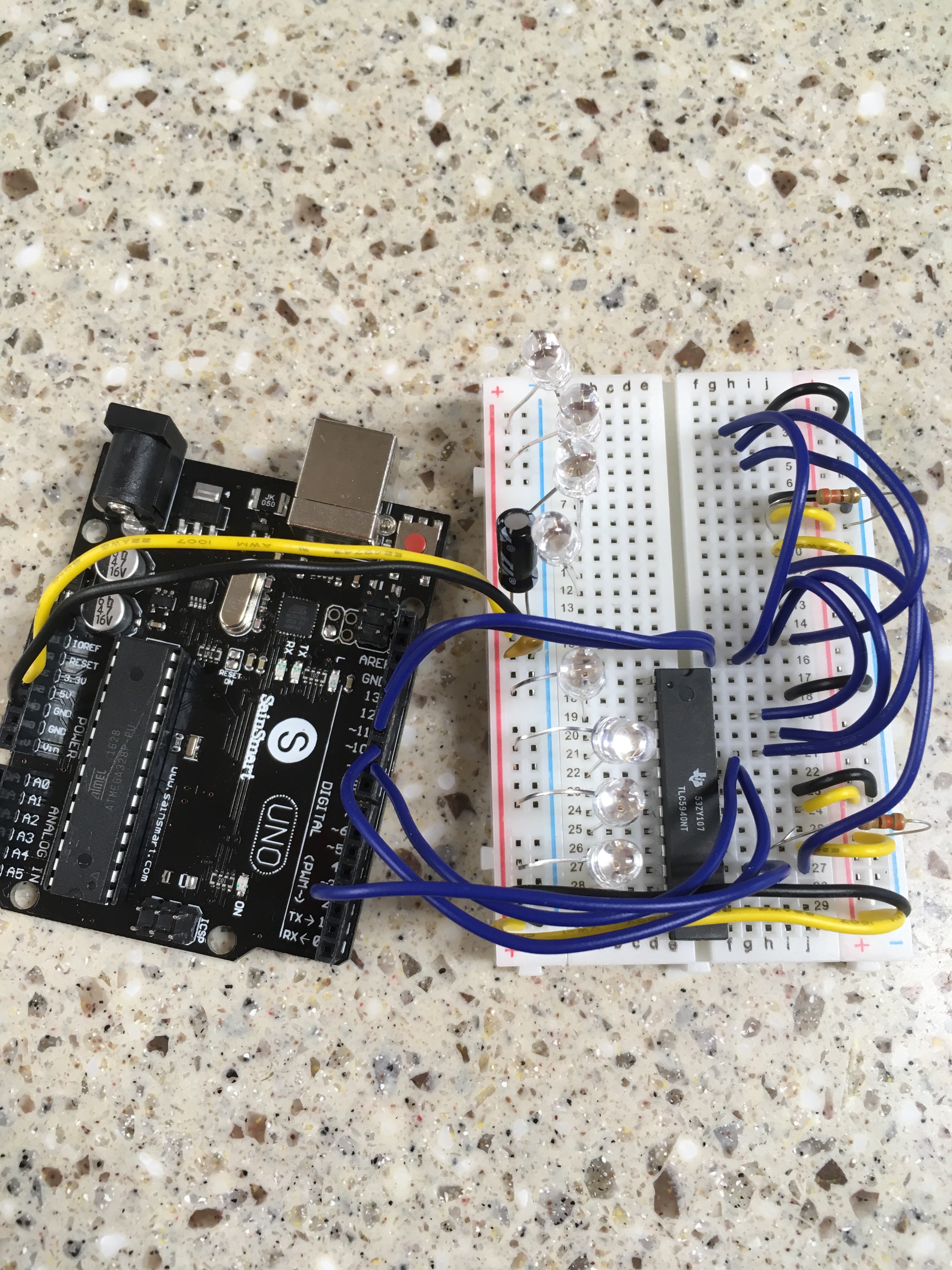March 16, 2018
Posted by wordae on Saturday, March 17, 2018 in Uncategorized.
Anna and Sophie procured a new larger headset that will be able to accommodate the dome more easily. The new headset is made for phones that are up to 6.5” diagonally, which is much bigger than the previous headset. Anna hollowed out the headset and performed the needed measurements in order to position the dome at the correct distance from the eye. Because the 3 mm LEDs that Khairah and Judy ordered have still not arrived, the electronics team are moving forward with their circuit design using 5 mm RGB LEDs purchased from Amazon, changing the size requirement of the LED holes from 3 mm to 5 mm in diameter. Sophie altered the CAD model to mirror these changes, reworking the attachment and support structures. The part was then 3D printed at the Won’dry.

The finalized CAD design for the new perimeter dome.
After printing, Sophie attached adhesive magnets to the supports on the dome and to the headset casing such that the dome would be centered on the patient’s eye and attached the dome to the headset as shown below. This version proved much more stable than the previous iteration.


The new headset with new perimeter dome attached.
For this week’s design iteration, Judy and Khairah constructed a circuit using a LED driver and the 5 mm RGB LEDs. We are still working on modifying the Arduino code that executes the blinking command for the RGB LEDs because the LED driver that we are using (TLC5940) has its own set of functions within its code library. Therefore we need to figure out how to control the LED wavelengths appropriately.

The circuit with one LED driver and RGB LEDs.
We also found out that for 24 RGB LEDs, we will need six LED drivers in total. This will take up a lot of space since we are using mostly through-hole electronic components. For now, we discovered that this can be remedied in two ways. One of them is by using surface-mounted electronic components, which are generally smaller. This will lead to us having to custom-print our PCBs. If we want to retain the usage of through-hole electronic components, we are thinking about multiplexing the LEDs, which could be done with only one or two LED drivers.